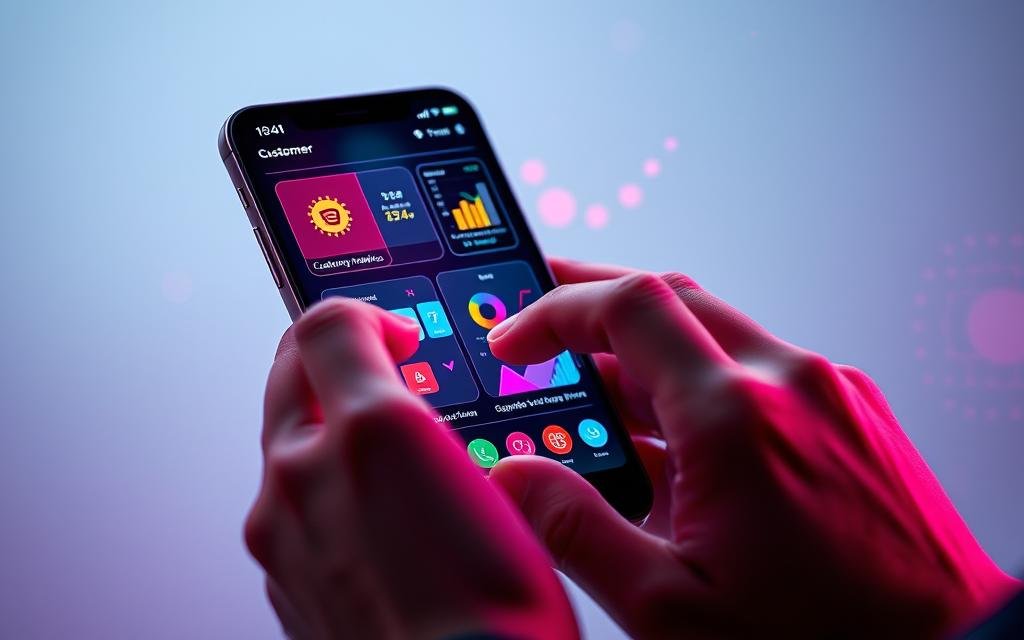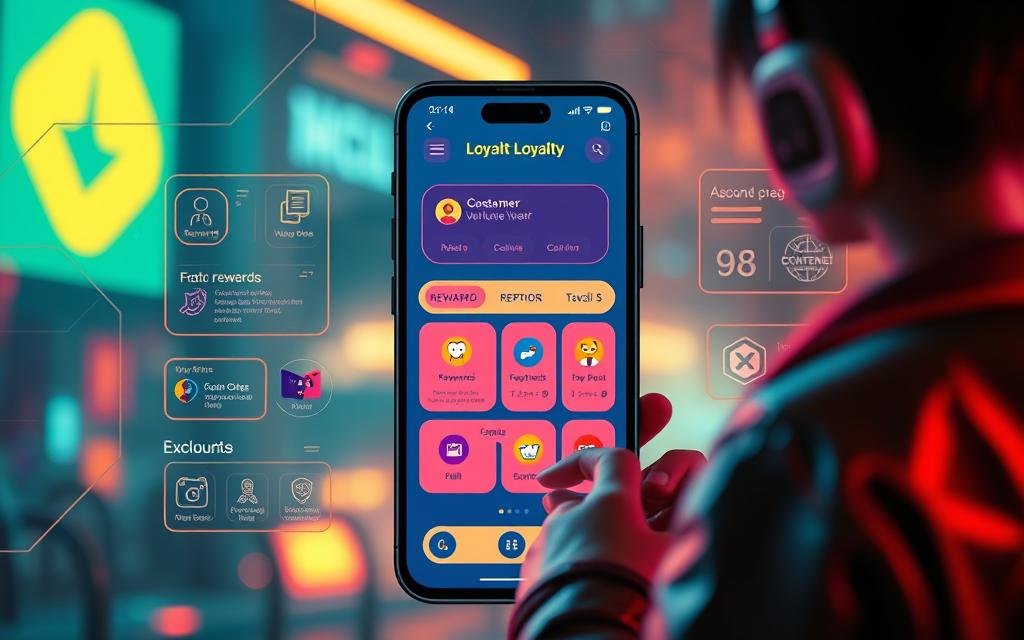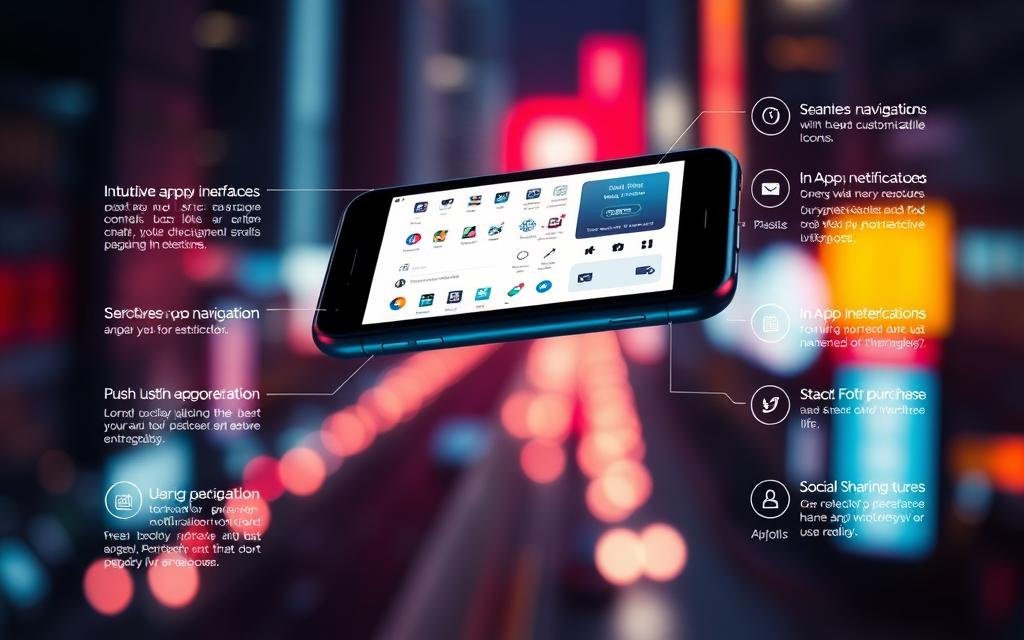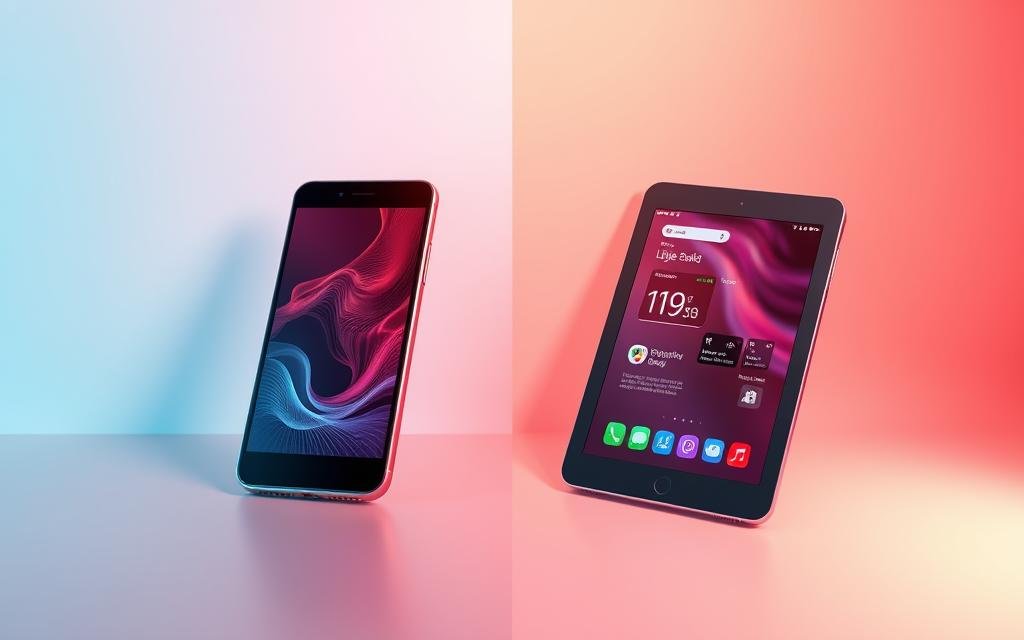In today’s fast-paced digital world, businesses need smart tools to connect with customers. Mobile apps have become a game-changer, offering direct access to users and fostering lasting relationships. Studies show companies with well-designed applications see higher retention rates, proving their value in building loyalty.
Platforms like Instagram and Snapchat highlight how intuitive design keeps users hooked. These apps blend functionality with personalization, making every interaction feel tailored. This approach isn’t just for social media—retail, banking, and even fitness brands use similar tactics to stand out.
A recent industry report revealed apps with smooth navigation and quick load times boost satisfaction by 40%. Users crave seamless experiences, and meeting these expectations drives repeat engagement. For example, Starbucks’ rewards program within its application increased customer spending by 25% year-over-year.
Creating a successful app requires clear goals. Whether streamlining purchases or offering exclusive content, every feature must align with user needs. In the next sections, we’ll explore how strategic planning and technical precision turn ideas into loyalty-building tools.
Key Takeaways
- Mobile apps create direct channels for personalized customer interactions.
- Top-performing platforms prioritize intuitive design and speed.
- User satisfaction rises when apps solve specific problems efficiently.
- Reward systems within applications can significantly boost spending habits.
- Clear objectives ensure every feature aligns with long-term loyalty goals.
Introduction to App Development for Enhanced Customer Engagement
Smartphones dominate daily life in America, with users spending 65% of their digital media time on mobile devices. Statista reports show 85% of U.S. adults own smartphones, creating endless opportunities for brands to connect. Companies without mobile-friendly solutions risk losing relevance in this screen-first era.

Understanding the Mobile Landscape in the United States
Over 300 million Americans use smartphones daily, averaging 4+ hours on apps and web browsing. Retailers see 70% of online traffic from phones, while banking apps handle 55% of transactions. This shift demands tools that work seamlessly across platforms.
Setting Your Development Goals
Clear objectives separate successful projects from wasted efforts. Start by asking:
- Does your code prioritize fast load times?
- Is the design adaptable for iOS and Android users?
- Can web features integrate smoothly?
A fitness brand increased membership renewals by 30% after aligning its app’s features with member workout patterns. This shows how understanding user habits shapes effective solutions.
Benefits of App Development in Boosting Customer Loyalty

In an era where convenience reigns, tailored digital experiences foster lasting loyalty. Businesses using mobile solutions see 63% higher retention rates compared to those relying solely on websites, according to a 2023 Salesforce study. This gap highlights how accessibility drives repeat interactions.
Three key advantages stand out:
- Personalized push notifications increase open rates by 4x
- In-app rewards programs boost repeat purchases by 34%
- 24/7 access to services improves satisfaction scores by 28%
| Business Type | Retention Increase | Avg. User Rating |
|---|---|---|
| Startups | 55% | 4.6/5 |
| Enterprises | 41% | 4.3/5 |
Starbucks’ loyalty program demonstrates this power. Members using their application spend 2.7x more than non-members.
“Our members crave frictionless rewards. The mobile experience delivers that.”
Ease of navigation proves critical. Platforms with intuitive menus retain 82% of first-time users, while cluttered designs lose half within a week. Simple updates like one-tap reordering can transform casual shoppers into brand advocates.
How Mobile App Features Drive User Engagement
Successful digital tools thrive on features that keep users coming back. A 2024 UX study found platforms with interactive elements see 50% longer session times compared to static designs. This proves functionality alone isn’t enough—experiences must feel alive.

Design Considerations for Mobile Apps
Intuitive layouts are non-negotiable. Users abandon 68% of apps after one use if navigation feels cluttered. Top-performing platforms like Airbnb use:
- Clear iconography matching real-world actions
- Adaptive layouts for varying screen sizes
- Color contrasts meeting ADA accessibility standards
| Feature | Impact on Engagement | Example |
|---|---|---|
| One-tap checkout | +22% conversion rate | Amazon’s “Buy Now” button |
| Gesture controls | +18% daily usage | TikTok’s swipe-to-refresh |
| Dark mode | 35% prefer for evening use | Twitter’s theme options |
Integrating User-Centric Features
Personalization drives loyalty. Spotify’s “Daily Mix” playlists demonstrate how algorithms can predict preferences. Fitness apps like MyFitnessPal use progress trackers to turn mundane tasks into achievements.
Gamification works wonders. Duolingo’s streak counters keep 83% of learners returning weekly. As their design lead notes:
“Rewards must feel earned, not given. Tiny celebrations build big habits.”
Offline capabilities also matter. Navigation apps like Google Maps let users download areas, ensuring access without signal. This thoughtful touch reduces frustration during travel.
Navigating the App Development Process: Strategies and Tools
Building digital solutions requires smart choices from the very first step. Whether creating a loyalty program or streamlining services, the process demands careful planning. Let’s explore practical tools and methods to turn ideas into reality efficiently.

Code Mastery vs. Builder Platforms
Learning programming languages like Swift or Java offers total control over features. However, this option takes months of practice. Platforms like BuildFire simplify creation with drag-and-drop interfaces—no coding needed. A local bakery doubled online orders using such tools in just three weeks.
Speed Through Templates and SDKs
Prebuilt templates cut design time by 60%, while SDKs add ready-made features like payment gateways. For example, a fitness startup used React Native’s templates to launch their MVP in 45 days. This option works best when budgets are tight but timelines tighter.
Choose your path based on expertise and goals. As one tech lead shared:
“We switched to app builders after realizing 80% of our features existed as plug-and-play modules.”
Comparing Native and Hybrid App Development Approaches

Choosing the right framework shapes how users interact with your brand. Native solutions use platform-specific languages like Swift for iOS or Kotlin for Android. These tap directly into device hardware, enabling features like AR filters or NFC payments. Hybrid models, built with web tech like JavaScript, run across platforms but may lack speed.
Android holds 43% of the U.S. market, making native tools vital for leveraging its ecosystem. Camera APIs and battery optimization work seamlessly here. Hybrid alternatives save time—one codebase covers iOS and Android. However, complex animations often stutter compared to native performance.
| Approach | Speed | Cost | Performance |
|---|---|---|---|
| Native | Fast | High | Optimized |
| Hybrid | Moderate | Low | Variable |
Snapchat’s Android version uses native code for real-time lenses. A retail chain’s hybrid solution cut launch costs by 40% but faced menu lag. As a tech lead noted:
“We chose hybrid for MVP testing, then rebuilt key parts natively.”
Budget and goals dictate the path. Need deep device integration? Go native. Prioritize cross-platform reach? Hybrid works. Balance is possible—many teams blend both methods.
Overcoming Challenges in Integrating App and Web Experiences
Bridging mobile and web platforms often feels like solving a digital puzzle. Users expect identical features across devices, but technical limitations can create frustrating gaps. A 2024 Forrester study found 72% of businesses struggle with inconsistent performance when merging these environments.
Leveraging Third-Party APIs and Cloud Services
Third-party APIs act as universal translators between systems. Payment gateways like Stripe simplify transactions, while cloud services like AWS handle traffic spikes. One retail brand reduced checkout errors by 40% using Twilio’s SMS API for order confirmations.
Common integration hurdles include:
- Data sync delays causing outdated information
- Varied screen sizes breaking responsive designs
- Security gaps during cross-platform data transfers
A fitness application solved connectivity issues by storing workout data locally during offline use, then syncing via Firebase when back online. This approach maintained user progress across devices without requiring constant signals.
“Cloud-based tools let us focus on UX instead of infrastructure. They’re the unsung heroes of seamless integration.”
Specialized testing tools like BrowserStack help teams preview how features appear on 3,000+ real devices. Combined with adaptive coding frameworks, these resources turn integration headaches into competitive advantages.
Cost Considerations and Budget-Friendly Development Options
Launching a digital solution doesn’t require emptying your wallet—if you know where to invest. The average project ranges from $15,000 to $300,000+ depending on complexity. Location plays a huge role: North American developers charge $100-$150/hour, while Eastern European teams offer similar skills at $40-$80/hour.
Smart Spending for Maximum Impact
Small businesses often choose builder platforms like BuildFire ($99/month) to launch basic solutions quickly. These options eliminate coding needs but limit customization. For example, a Chicago bakery built its ordering system using a template in three weeks for under $5,000.
| Region | Avg. Hourly Rate | Project Timeline | Budget-Friendly Option |
|---|---|---|---|
| North America | $120 | 6-9 months | Hybrid frameworks |
| Eastern Europe | $60 | 4-7 months | SDK integration |
| Asia-Pacific | $25 | 5-8 months | Prebuilt templates |
Timelines shrink when reusing existing code. A fintech startup saved 200 hours by adapting open-source payment modules. Their MVP launched in 12 weeks instead of six months.
To get started with limited funds:
- Prioritize core features that solve immediate user needs
- Use cross-platform tools to avoid double-coding costs
- Test ideas through prototypes before full-scale development
As one SaaS founder shared:
“We allocated 70% of our budget to UX design. Smooth functionality kept users coming back, funding future upgrades.”
Optimizing User Experience and Security in Mobile Apps
Balancing seamless interactions with ironclad protection separates top-tier apps from forgotten downloads. A 2024 Pew Research study found 79% of users abandon applications that feel sluggish or intrusive. This makes speed and security non-negotiable for modern solutions.
Cloud integration solves two problems at once. Offloading data processing reduces device strain, cutting load times by up to 40%. It also centralizes security updates—a critical advantage against evolving cyber threats. For example, banking apps using AWS encryption see 92% fewer breach attempts.
Three strategies keep user experiences sharp:
- Simplify navigation with thumb-friendly zones and swipe gestures
- Implement biometric logins (fingerprint/face ID) for faster access
- Use adaptive layouts that work across browsers and screen sizes
| Security Feature | Adoption Rate | User Trust Impact |
|---|---|---|
| End-to-end encryption | 68% | +31% retention |
| Two-factor authentication | 57% | +24% satisfaction |
As mobile security expert Dr. Lena Torres notes:
“Security can’t slow users down. The best systems work invisibly—like seatbelts in modern cars.”
Brands that nail this balance see measurable gains. Retail apps with one-touch checkout and tokenized payments report 45% higher repeat usage. Remember: every second saved and every vulnerability patched builds lasting user loyalty.
Conclusion
The journey from concept to loyal users demands more than code—it requires aligning technical choices with real human behavior. As shown throughout this guide, strategic app development bridges functionality with emotional connection, turning casual interactions into lasting loyalty.
Whether building natively for precise Android integrations or opting for hybrid models to save time, each approach offers distinct advantages. Retailers like Starbucks prove that reward systems within applications drive spending, while platforms like Duolingo showcase how gamified features boost daily engagement.
Practical solutions emerge when balancing cost and quality. Builder tools slash timelines, prebuilt templates simplify design, and cloud integrations enhance security without slowing performance. Case studies reveal startups achieving 55% retention gains by focusing on core user needs first.
Ready to transform your digital strategy? Review the actionable tips and case studies shared here. Start small—identify one friction point your audience faces, then prototype solutions using cross-platform tools. A well-built application becomes a growth engine, fostering connections that outlast trends.
Every line of code, every design choice, and every update shapes how customers perceive your brand. Prioritize their experience, and watch engagement evolve into unwavering loyalty.

Thank You!